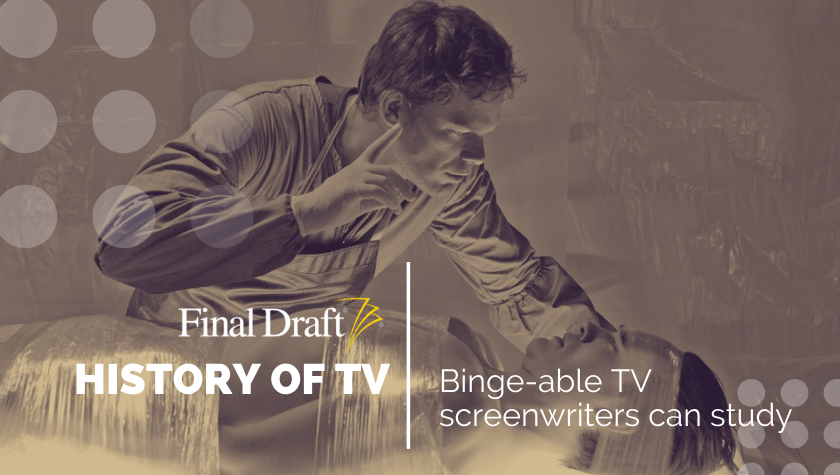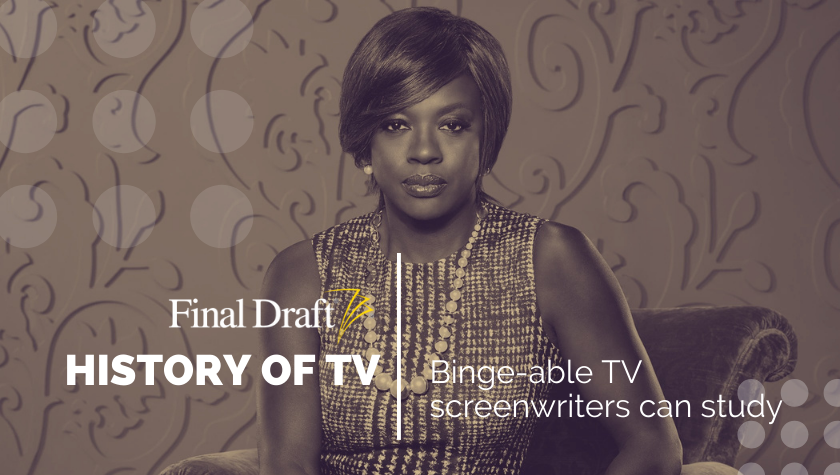History of TV: Breaking Down Murder Mystery Network Classic ‘Castle’
January 7, 2021
Castle was the epitome of network prime time television when it aired. Light and frothy murder that was easy on the eyes with a sexy cast who solved the case in 44 minutes or less, and offered a side of wit and romance. The ABC crime/comedy/drama hit the right note with viewers through its eight-season run from 2009 to 2016, gaining their favor as People’s Choice Awards winners for Favorite Crime Drama TV Actor and four years running for Favorite TV Crime Drama starting in 2012.
It was James Bond lite, if Bond were a female by-the-book NYPD detective and his Bond Girl was a suave man-child mystery writer. As an audience, you know exactly what you’re getting with Castle right from the opening minutes of the pilot, which makes it excellent study material for television screenwriters.
Cookie-cutter structure
The conceit is baked right into the plot in a most unabashed way: this is a writer having fun with writers. The pilot opens on a series of copycat murders that emulate the plots of fictional mystery writer Richard “Rick” Castle’s (Nathan Fillion) novels. He’s right up there with James Patterson and Stephen J. Cannell — both of whom make guest appearances as themselves in a poker game with Castle, who runs the real-life murders by them, but as a novel plot. These masters of mystery encourage him to add a twist by digging deeper than the obvious scapegoat who the NYPD just arrested. And Castle is off to the races. In this case, researching further to discover that life is often more twisted and uglier than anything fictional, and is therefore innately inspiring. “I’m here for the story. Why those people?” Castle inquires not so rhetorically in the pilot.
Solving unusual cases with the NYPD, along with its lead detective Kate Beckett (Stana Katic), become Castle’s new muse as he embarks on writing a new series — and thus sets up the story engine for the show. The death of Beckett’s mother, as well as her flourishing romantic relationship (the type of slow-burn relationships not afforded by most shows with short runs these days) with Castle provide the series arc.
Each episode can be further broken down into very discernable acts that all drive towards the commercial break beat — hooking the viewer to return after they’ve refilled their popcorn bowl. Two story structure highlights that are quintessential Castle — and most procedurals — are the drawn-out teaser and the escalating obstacles and misdirects at every act out. As the first spec I ever wrote, a decade ago now (gulp! Has it been that long?!), it was a dream to map out. You had your case of the week, the love story between Castle and Beckett to further, and maybe a fun little C story with the quirky supporting characters.
The power of IP
“If I were writing the story…” Castle references character motivation for murder in one of his novels and how it relates to the real-life murder he and Beckett are investigating. It’s a bit of fun genius on the part of the ABC marketing team. While Castle writes his Heat Wave series during the show, ABC and Hyperion Books published the actual Heat Wave books by Richard Castle; their entirety in character, right down to the books' dedications. Marvel Comics also released a graphic novel based on Castle’s hit character (prior to Nikki Heat, whom he based off of Beckett), Derrick Storm: Castle: Richard Castle’s Deadly Storm. There’s also a Derrick Storm book series and all books by “Richard Castle” have hit the New York Times Best Seller list.
While this is an interesting, marketable ploy by a large conglomerate, it’s also indicative of audience appetite for cross-media offerings. If you’ve got a script, consider what other form it could live in: Graphic novel? Paperback? The more you have written in your constructed world of the story, the more marketable IP you have. In fact, Final Draft featured a handy blog post just prior to Christmas about the adaptation process, which you can read here. While it was focused on holiday movies, the same rules apply for other genres.
Giving the audience what they want
Castle was one of those shows that knew what its target audience wanted: A romance between Beckett and Castle, unique and niche (but not too gruesome) cases to solve that would suit a mystery writer, and characters with flair. While Castle and Beckett were the heart of the show, they were surrounded by a slew of lovable supporting characters who received storylines and backstory that made the world of Castle feel more fully realized. Castle’s vivacious, ex-Broadway star mother (Susan Sullivan), his over-achiever daughter (Molly C. Quinn), who usually parents Castle more than he parents her, NYPD partners Esposito (Jon Huertas) and Ryan (Seamus Dever), who round out Beckett’s team, the coroner Lanie (Tamala Jones), and the captains — first Montgomery (Ruben Santiago-Hudson) and then Gates (Penny Johnson Jerald).
The romance between the two leads flourished slowly, over multiple seasons, in a way that used to be common for network shows when they were given more than a season to grow legs and audiences had an attention span for more than eight-episode seasons. There was more incentive to keep tuning back in because you were constantly on the hook to find out will they/won’t they, knowing that eventually, they would.
In retrospect
Castle is a good watch (and script read!) for procedural (and Nathan Fillion!) fans — at least the first few seasons are, before the story starts to meander after the lead characters finally get together. Which begs the question, should you really give an audience what they think they want?
The show is also easy to break down for new screenwriters; a flashier study of murder mysteries. “It’s just so senseless,” Castle states in the pilot. “Murder usually is,” his daughter Alexis responds. “No. Murder usually makes a great deal of sense. Passion, greed, politics. What’s senseless here are the stories the killer chose," Castle said. Those stories give him pause, make the audience think beyond the obvious and experience the beauty of the what if in writing.
Catch all eight seasons of Castle on Amazon Prime.
Written by: Karin Maxey
After seeing her first big screen movie 007: License to Kill at age six, Karin naturally became obsessed with writing action-infused stories. The next time she’d see Benicio del Toro was in person, at the 68th Cannes Film Festival—he was there for the Sicario red carpet, she was there for her first produced short film in the basement of the Palais…same-same. In between, Karin earned a Creative Writing Degree and landed management at Echo Lake Entertainment. Her scripts have been a Big Break Top 3 finalist, HollyShorts Film Fest Official Selection, and a multi-Screencraft competitions semi-finalist. Karin is also a screenplay editor who delights in the process of polishing writers' work for submission. You can find her at www.writergirlkarin.com.- Topics:
- Discussing TV & Film




